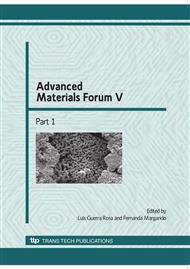p.571
p.578
p.585
p.592
p.597
p.605
p.612
p.618
p.624
Microstructural Signatures of Bronze Archaeological Artifacts from the Southwestern Iberian Peninsula
Abstract:
This study concerns the elemental and microstructural characterization of proto-historic bronze rings from the southwestern Iberian Peninsula. Micro-EDXRF analyses demonstrate that the artifacts are binary bronze alloys (8–13% Sn) with arsenic and lead as the major impurities. Optical microscopy and SEM-EDS allowed the identification of common inclusions (e.g. copper sulphides) and alteration processes (redeposited copper, intergranular and intragranular corrosion). Microstructures consisting of fine dendrites, coarse and/or equiaxial grains were also identified, as well as the presence of (+) eutectoid, deformed inclusions, twinned grains and/or slip bands. The combination of these characteristics allowed establishing the metallurgical procedures (casting, forging and annealing) used in the production of the bronze rings. The identification of different thermomechanical operational sequences indicates that the metallurgical knowledge was well established in the southwestern Iberian Peninsula during those ancient times.
Info:
Periodical:
Pages:
597-604
Citation:
Online since:
January 2010
Keywords:
Price:
Сopyright:
© 2010 Trans Tech Publications Ltd. All Rights Reserved
Share:
Citation:


